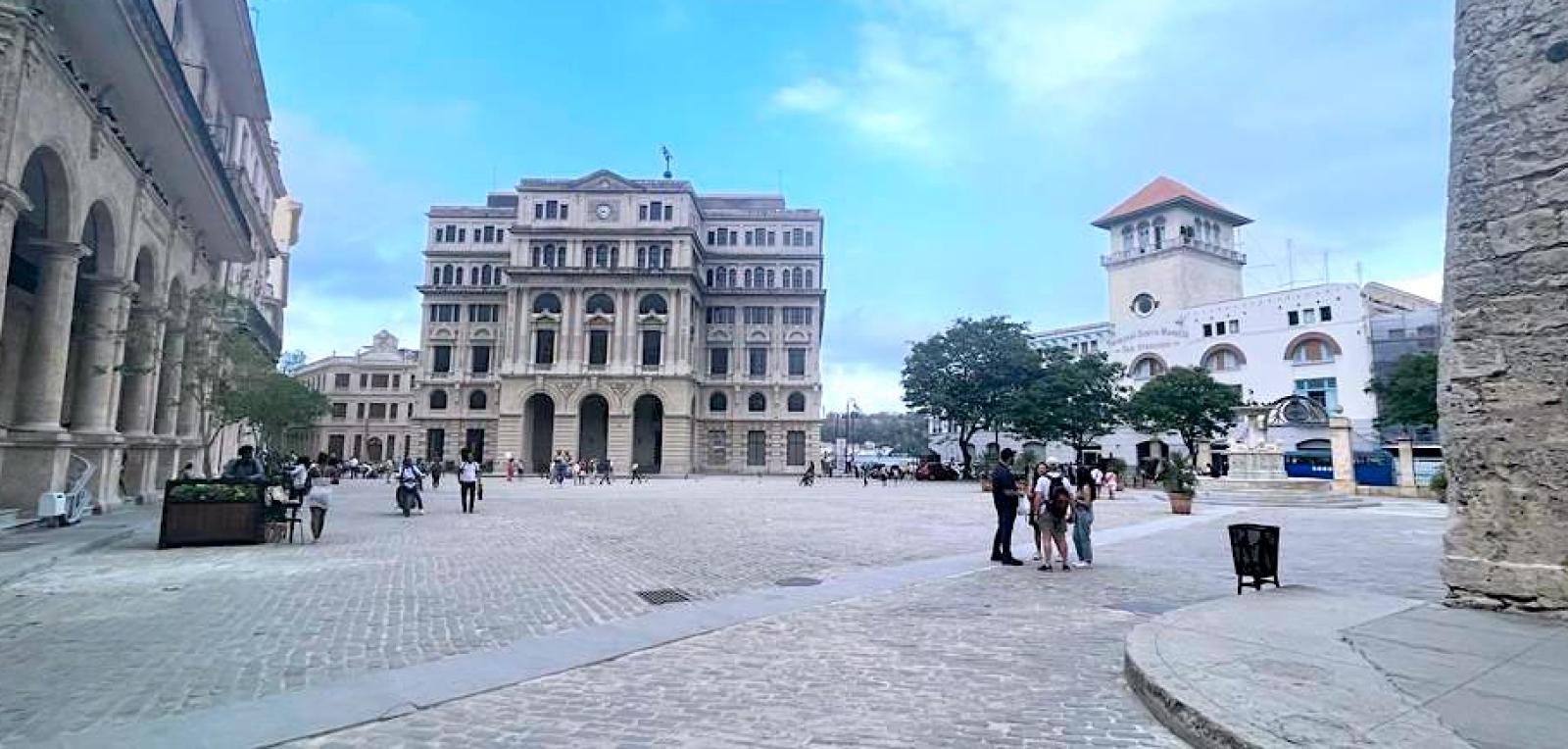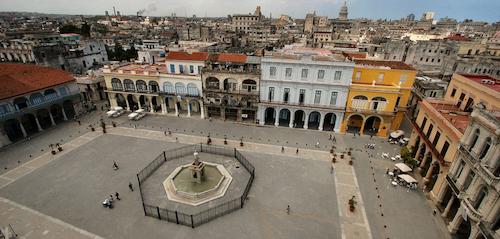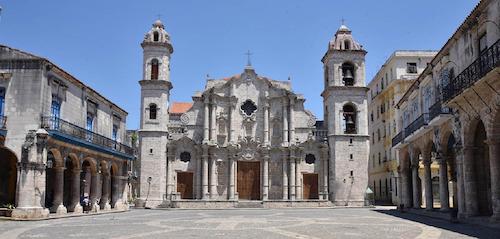
Definitely founded on November 16, 1519, under the shade of a ceiba tree near the bay, the town of San Cristóbal de La Habana began to grow out of the pocket of a kind of central esplanade, typical of the Spanish custom, drawn in front of the historical site of the sacred and official baptism, which they began to call Plaza de Armas.
This first place of ceremonies, was the point at which edicts and important notices of communal interest and military parades were made known. Precisely around it stood, on the side closest to the splendid Bay of Carenas, the legendary ceiba that since then has always accompanied the inhabitants of the capital as a historical and sacred symbol, although with different generations of that species.
The mother of squares, although without fame of being the most beautiful, is surrounded by the most privileged of environments, with the representative buildings of the political, military power and the ruling authority at the time of the birth of the city, which gave rise to the Historic Center of the Cuban capital, World Heritage Site, enclave as beautiful as most.
At first it was the Parrochial Major, but much later its location was changed. Adjacent to it are the Castle of the Royal Force, the first fortress of the colonial defense system, construction begun in the same century as the foundation, the Palace of the General Captains, the most majestic building standing today, currently a comprehensive museum, that of the Second Corporal, the Museum of Natural History in a more contemporary building and gives way to the very colonial pedestrian street of Obispo.But Havana continued to grow as a bustling and prosperous urban conglomerate, thanks to its port, excellent geographical location in the Americas, and the fertile lands that surrounded it.
In the heart of the shady wooded plain and endowed with old stone benches, for relaxation, is the statue of Carlos Manuel de Céspedes, Father of the Nation. So there is room there for the entire history of the nation. But Havana continued to grow as a bustling and prosperous urban conglomerate, thanks to its port, excellent geographical location in the Americas, and the fertile lands that surrounded it.
 A city full of color was born, inhabited and transited temporarily by a multitude of people of all stripes. Since its birth, the muddy grounds and the first stones of the floor of the added squares supported the weight of knights, sailors and adventurers on their horses, carts pulled by cattle and the restless feet of neighbors, merchants, in a lively social and economic give and take of the daily happenings. In addition to the Arms, among the first five squares of the colonial city were the Plaza of San Francisco, to which the fountain of lions was added in the 19th century. Also the Plaza Nueva, today known as the Old, which was the most important center of commercial transactions, the Plaza del Cristo and the first called Plaza de la Ciénaga, today considered perhaps the most beautiful of its kind. The Plaza of the Cathedral not only holds the scepter of beauty, but also that of popularity and spirituality. It has been the center of religious, cultural and commercial activities.
A city full of color was born, inhabited and transited temporarily by a multitude of people of all stripes. Since its birth, the muddy grounds and the first stones of the floor of the added squares supported the weight of knights, sailors and adventurers on their horses, carts pulled by cattle and the restless feet of neighbors, merchants, in a lively social and economic give and take of the daily happenings. In addition to the Arms, among the first five squares of the colonial city were the Plaza of San Francisco, to which the fountain of lions was added in the 19th century. Also the Plaza Nueva, today known as the Old, which was the most important center of commercial transactions, the Plaza del Cristo and the first called Plaza de la Ciénaga, today considered perhaps the most beautiful of its kind. The Plaza of the Cathedral not only holds the scepter of beauty, but also that of popularity and spirituality. It has been the center of religious, cultural and commercial activities.
 A place of incredible animation, with the admirable baroque building of the Metropolitan Cathedral of Havana, built in the last quarter of the 18th century, owner and lord of the landscape. Its old cobblestones and the colonial mansions that surround it each have a history, deeply rooted in the origins and life of the people of the capital.
A place of incredible animation, with the admirable baroque building of the Metropolitan Cathedral of Havana, built in the last quarter of the 18th century, owner and lord of the landscape. Its old cobblestones and the colonial mansions that surround it each have a history, deeply rooted in the origins and life of the people of the capital.
It was always and still is convening, like that of Arms. In the Plaza Vieja, from the 19th century, the mansion of the Counts of Jaruco was built on a large part of its land, still standing, which with its beautiful semicircular arcades is one of the main exponents of the stately home of Cuban squares, as the crow flies.